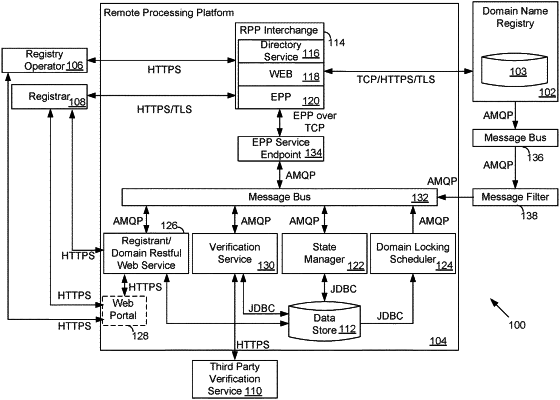| CPC H04L 61/302 (2013.01) [G06F 16/955 (2019.01); G06Q 30/018 (2013.01); H04L 61/4511 (2022.05)] | 23 Claims |

|
23. A computing device comprising a processor and a hardware storage device storing instructions for operating at least one transaction interchange device, wherein the instructions are executed by the processor to configure the computing device to:
interoperate the at least one transaction interchange device with a registrar device or other device external to the at least one transaction interchange device, including:
providing a transaction processing service for a domain name transaction initiated by a request initiator, the domain name transaction received from a transaction forwarding service of a remotely located system, wherein the request initiator comprises the registrar device or the other device external to the at least one transaction interchange device and only sends the request for processing the domain name transaction to the transaction forwarding service and not directly to the computing device; and
wherein the transaction processing service is configured to:
store transaction data associated to the domain name transaction in a local data store coupled to the computing device; and
trigger verification of the transaction data by a remote verification service located remotely to the computing device, such that the computing device receives from the remote verification service:
a verification of the transaction data in response to the trigger from the computing device; and
a locking or unlocking of the transaction data stored in the local data store coupled to the computing device utilizing requests generated in response to the verification by the remote verification service.
|